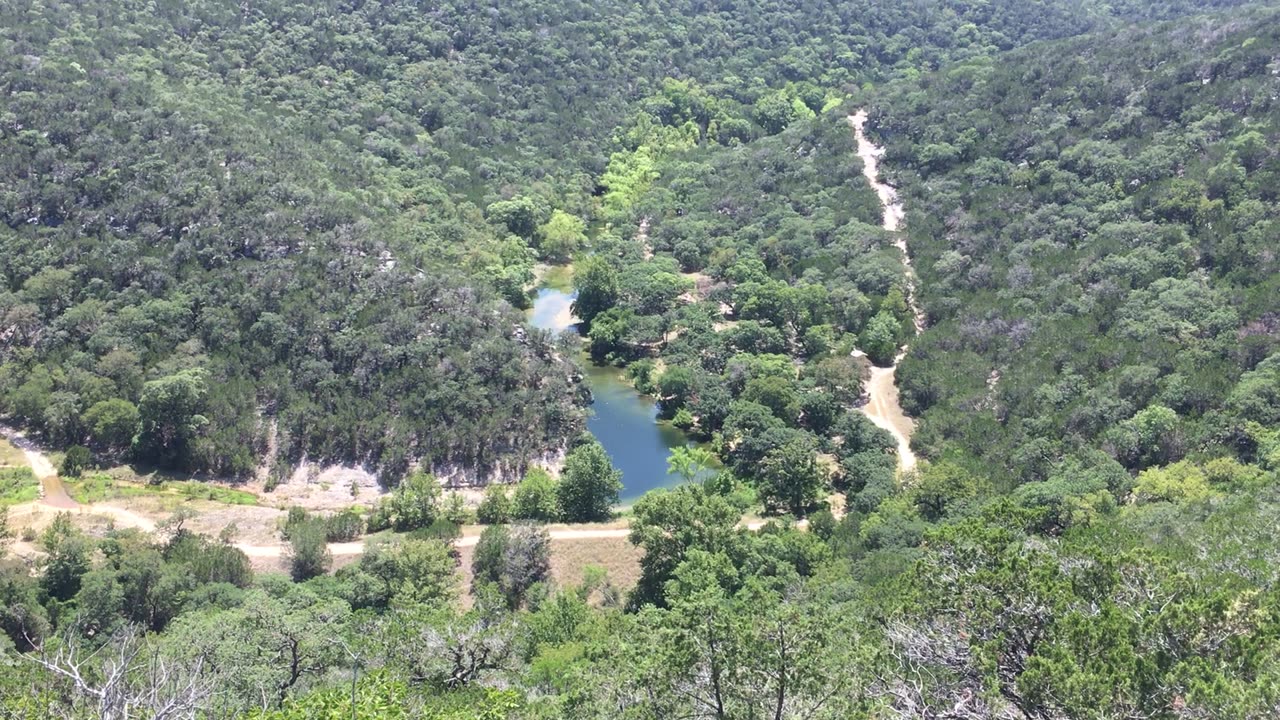Premium Only Content

Karst Topography
Limestone canyons are geological formations characterized by deep, narrow gorges or valleys carved into limestone rock. These canyons are the result of the erosional processes of water, typically through the dissolution of calcium carbonate in the limestone by acidic water or the physical erosion caused by the flow of water over time. Limestone is a sedimentary rock composed primarily of calcium carbonate (CaCO3), and it is particularly susceptible to erosion by water due to its solubility in slightly acidic rainwater.
Here are some key features and characteristics of limestone canyons:
Formation: Limestone canyons form gradually over long periods as water, often from rivers or underground springs, flows through and interacts with the soluble limestone rock. Over time, the rock is eroded, and the canyon deepens and widens.
Unique Geology: Limestone canyons often have unique geological features, including exposed limestone walls, rugged terrain, and interesting rock formations. These canyons can sometimes contain caves and underground passages as well, formed through the dissolution of limestone.
Karst Topography: Limestone canyons are often associated with karst topography, which is characterized by features such as sinkholes, caves, and underground rivers. Karst landscapes are the result of the dissolution of limestone by water over time.
Spectacular Scenery: Limestone canyons can offer some of the most stunning and picturesque landscapes. The rugged beauty of these canyons, combined with the clear waters that often flow through them, can make them popular destinations for hiking, rock climbing, and outdoor exploration.
Examples: Some well-known limestone canyons include Antelope Canyon in Arizona, USA, which is famous for its narrow, winding passages and colorful sandstone walls. Another example is the Verdon Gorge in France, which is often referred to as the "Grand Canyon of Europe" due to its dramatic limestone cliffs and deep canyon.
Ecological Importance: Limestone canyons can also support unique ecosystems, as the porous nature of limestone allows for the development of underground aquifers and the creation of habitats for various plant and animal species.
Cultural Significance: Many limestone canyons have cultural or historical significance for indigenous communities or early settlers who relied on these natural features for shelter, water sources, and transportation routes.
Limestone canyons are not only geological wonders but also important natural environments with ecological, recreational, and cultural value. They provide opportunities for scientific research, outdoor activities, and appreciation of the Earth's geological history and natural beauty.
-
 2:59:10
2:59:10
Wendy Bell Radio
14 hours agoThe Bridge Too Far
127K190 -
 1:03:45
1:03:45
Donald Trump Jr.
1 day agoHappy Festivus: Airing Our Grievances and Stopping The Swamp w/Sean Davis | TRIGGERED Ep.201
398K522 -
 1:30:30
1:30:30
Game On!
17 hours ago $7.31 earnedTop 5 things you need to know for Sports Christmas!
54.6K4 -
 1:58:10
1:58:10
Robert Gouveia
1 day agoMatt Gaetz REJECTS Report, Sues Committee; Luigi Fan Club Arrives; Biden Commutes; Festivus Waste
280K224 -
 1:31:40
1:31:40
Adam Does Movies
1 day ago $15.47 earnedThe Best & Worst Christmas Movies! - LIVE!
106K8 -
 58:10
58:10
Kimberly Guilfoyle
1 day agoAmerica is Back & The Future is Bright: A Year in Review | Ep. 183
195K71 -
 3:03:27
3:03:27
vivafrei
1 day agoEp. 242: Barnes is BACK AGAIN! Trump, Fani, J6, RFK, Chip Roy, USS Liberty AND MORE! Viva & Barnes
268K256 -
 2:05:48
2:05:48
2 MIKES LIVE
10 hours agoTHE MIKE SCHWARTZ SHOW with DR. MICHAEL J SCHWARTZ 12-24-2024
39.7K5 -
 1:14:17
1:14:17
MTNTOUGH Fitness Lab
1 day agoNavy SEAL Dom Raso: The Cold, Hard Truth About Modern Brotherhood | MTNPOD #96
30.7K4 -
 43:42
43:42
Dad Dojo Podcast
1 day ago $0.88 earnedEP14: Every Girl Dad's Biggest Fear and How To Prevent It
21.3K